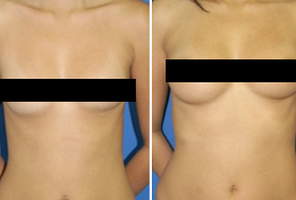Laser Resurfacing
In dermatology, lasers add another dimension for the treatment of skin diseases. Laser resurfacing can improve cosmetic flaws such as wrinkles, scars, and sun damage and is the latest scientific breakthrough in skin rejuvenation. Lasers (short for Light Amplification by Stimulated Emission of Radiation) work by producing an intense beam of light that travels in one direction. This beam can gently remove defective skin tissue in order to improve wrinkles, scars, or blemishes. In addition, lasers can also be used to destroy visible blood vessels or to cut skin tissue. Using a laser hand piece, undesired skin cells and wrinkles disappear and are replaced by fresh skin cells.
Laser resurfacing is often used to treat facial wrinkles. Wrinkles around the eyes, mouth or forehead may be treated individually, or a full-face laser removal may be performed. In general a partial-face laser removal takes 30-45 minutes and the full-face treatment takes 1-1/2 to 2 hours.
One of the laser's most significant advantages over traditional techniques for skin resurfacing is that treatment is relatively bloodless. This procedure also offers an increased degree of precision and safety in treating delicate areas.
It is important to understand the limitations of skin resurfacing using lasers. The laser is not a substitute for a facelift nor can the procedure eliminate excessive skin however, by tightening loose skin, laser resurfacing can improve certain folds and creases. More importantly, laser resurfacing offers an alternative to traditional resurfacing (dermabrasion) and can also work well in conjunction with other cosmetic skin procedures such as chemical peels.
Laser types and healing time
There are two types of lasers used for laser resurfacing, the erbium: YAG and the CO2 (carbon dioxide) lasers. The procedure is performed on an outpatient basis using local anesthesia in combination with orally or intravenously-administered sedative medications.
Following laser resurfacing, a sterile dressing is applied to the treatment sites for 24 hours and the patient then cleans the areas three times a day with saline solution. An ointment such as Vaseline or Aquaphor is then applied. Strict wound care is intended to prevent scab formation and assist with healthy wound healing. Typically, the areas heal in 10-21 days.
Once the areas have healed, makeup may be worn to camouflage the pink to red color that is generally present after laser skin resurfacing. Most dermatologist recommend oil-free make-ups as well as a green-based foundation since they neutralize the red color. The redness in the laser-treated areas generally fades in two to three months but may take as long as six months to completely disappear.
People with blonde or red hair may have a longer recovery period while patients with darker skin tones have a greater risk of healing with darker pigmentation (referred to as post-inflammatory hyperpigmentation). This may be minimized by using a bleaching agent before laser skin resurfacing as well as continued use of this agent after healing. Laser resurfacing is a relatively safe procedure however, as with any other medical procedure one should be aware of complications that may arise.
Milia, or small white bumps, may appear in the laser-treated areas during healing. These lesions do not scar and may be removed by gentle cleansing with a washcloth. As mentioned above, increased pigmentation and rarely decreased skin pigmentation may occur over the laser-treated areas. Lastly, reappearance of a cold sore may occur, especially after laser skin resurfacing around the mouth. This can be prevented by pre- treatment with antiviral medication one day before the procedure. The final result of laser resurfacing can take up to six months to fully appear. These results are long-lasting but not permanent as some people will require re-treatments over the years. Protection from the sun and a routine of good skin-care can help in maintaining a rejuvenated look.
Disclaimer:
This information is intended only as an introduction to this procedure. This information should not be used to determine whether you will have the procedure performed nor does it guarantee results of your elective surgery. Further details regarding surgical standards and procedures should be discussed with your physician

